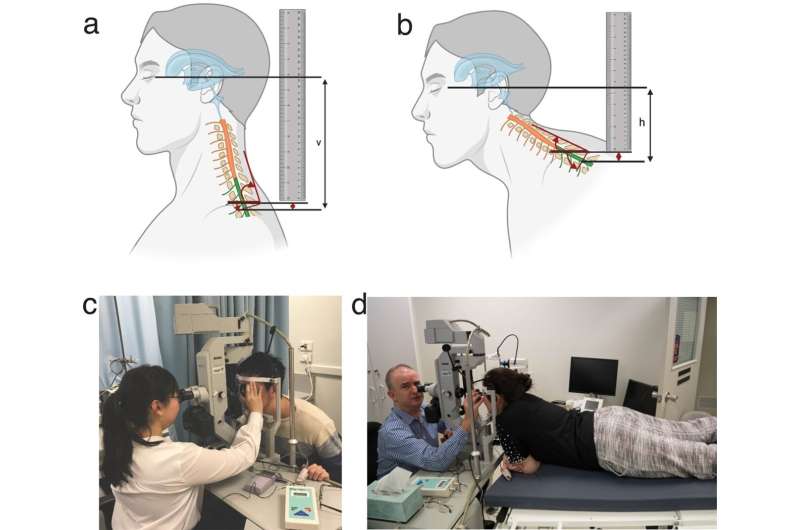This article has been reviewed according to Science X's editorial process and policies. Editors have highlighted the following attributes while ensuring the content's credibility:
fact-checked
trusted source
proofread
Improving astronaut vision in long-haul space flights

West Australian researchers have developed a breakthrough method to measure the brain fluid pressure in humans, which may reduce vision damage experienced by astronauts on long-haul space flights.
A cross-disciplinary team from the Lions Eye Institute and the International Space Center at The University of Western Australia has developed a clever technique to measure the pressure in the brain fluid, the study was published today in npj Microgravity.
Co-author Associate Professor Danail Obreschkow, from the International Center for Radio Astronomy Research and International Space Center Director, said the results may prove crucial to overcoming a type of blindness that frequently develops in astronauts on long-duration space flights.
"The so-called Space Associated Neuro-ocular Syndrome is one of the most serious risks for astronauts on long-duration flights and one that NASA identified as a significant challenge on future crewed missions to Mars," Associate Professor Obreschkow said.
Lions Eye Institute Director and lead author Professor Bill Morgan said human bodies had evolved to counter the effects of gravity by pushing blood upwards into the head.
"In microgravity, this can lead to an increased average pressure in the cerebrospinal fluid, which adversely affects the retina and deteriorates vision and other important functions," Professor Morgan said.
Until recently, this pressure could only be detected through invasive methods such as a lumbar puncture or skull burr hole, techniques which are painful, risky, and cannot be performed well in microgravity.
The team has now developed a space-safe and non-invasive method to measure cerebrospinal fluid pressure changes.
"All blood vessels experience tiny pulsations coming from the heartbeat," Professor Morgan said.
"The strength of the pulsations in the tiny veins of the retina should, in principle, depend on the cerebrospinal fluid pressure."
In the study, a special eye camera was used to measure tiny pulsation changes while subjects were put into different positions on a tilt-table, mimicking the effects of variable gravity on the cerebrospinal fluid pressure.
"Tilt table experiments on Earth are the only way of controllably altering the gravitational force upon the human body and allowed us to alter the cerebrospinal fluid pressure in small definite increments," Associate Professor Obreschkow said.
"It also forced us to develop systems which can be used in any postural position necessitating portable, small handheld devices which are essential if such systems are to be used in space."
The findings provide a basis for the use of a handheld portable non-invasive device in microgravity conditions that can monitor intracranial pressure meaning monitoring and testing of Space Associated Neuro-ocular Syndrome progression in space, which will ultimately improve astronaut health in long-haul flights.
More information: W. H. Morgan et al, Correlation between retinal vein pulse amplitude, estimated intracranial pressure, and postural change, npj Microgravity (2023). DOI: 10.1038/s41526-023-00269-0
Provided by University of Western Australia

















